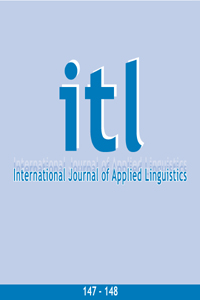 previous article in this issue previous article in this issue | next article in this issue  |

|
Document Details : Title: Developmental Stages in Advanced SLA Subtitle: A Corpus-based Analysis of Academic Writing by ESL Graduate Students Author(s): ENE, Estela Journal: ITL - International Journal of Applied Linguistics Volume: 156 Date: 2008 Pages: 53-86 DOI: 10.2143/ITL.156.0.2034421 Abstract : Second Language Acquisition (SLA) researchers have yet to map the developmental stages language learners go through as they approach the target language. In studies of English as a Second Language (ESL) writing, the term 'advanced learner' has been applied indiscriminately to learners ranging from freshman ESL composition to graduate students. There is a need to examine the advanced stages of SLA in order to refine SLA theories and pedagogical approaches. A corpus of texts written by non-native English-speaking doctoral students in applied linguistics from several linguistic backgrounds was analyzed to determine the texts’ lexical, morphological and syntactic fluency, accuracy and complexity. A sub-corpus of papers by native-English-speaking peers was used for comparison. The texts were strictly-timed and loosely-timed exams written 2 to 3 years apart. Surveys and interviews were also conducted. Based on findings, the study defines data-based criteria that distinguish four quantitatively and qualitatively distinct developmental stages: the advanced, highly advanced, near-native, and native-like stages. Advanced learners make more frequent and varied errors which can be explained by transfer from the first language. Native-like writers make few errors that can be explained by overgeneralization of conventions from informal English and working memory limitations (similar to native speakers’ errors). The study suggests that SLA is a process of transfer followed by relearning of morpho-syntactic specifications (Herschensohn, 2000), with syntax being used with the greatest accuracy (Bardovi-Harlig & Bofman, 1989) and lexicon with the least. The relationships between accuracy and other social and cognitive factors are considered, and pedagogical recommendations are made. |
